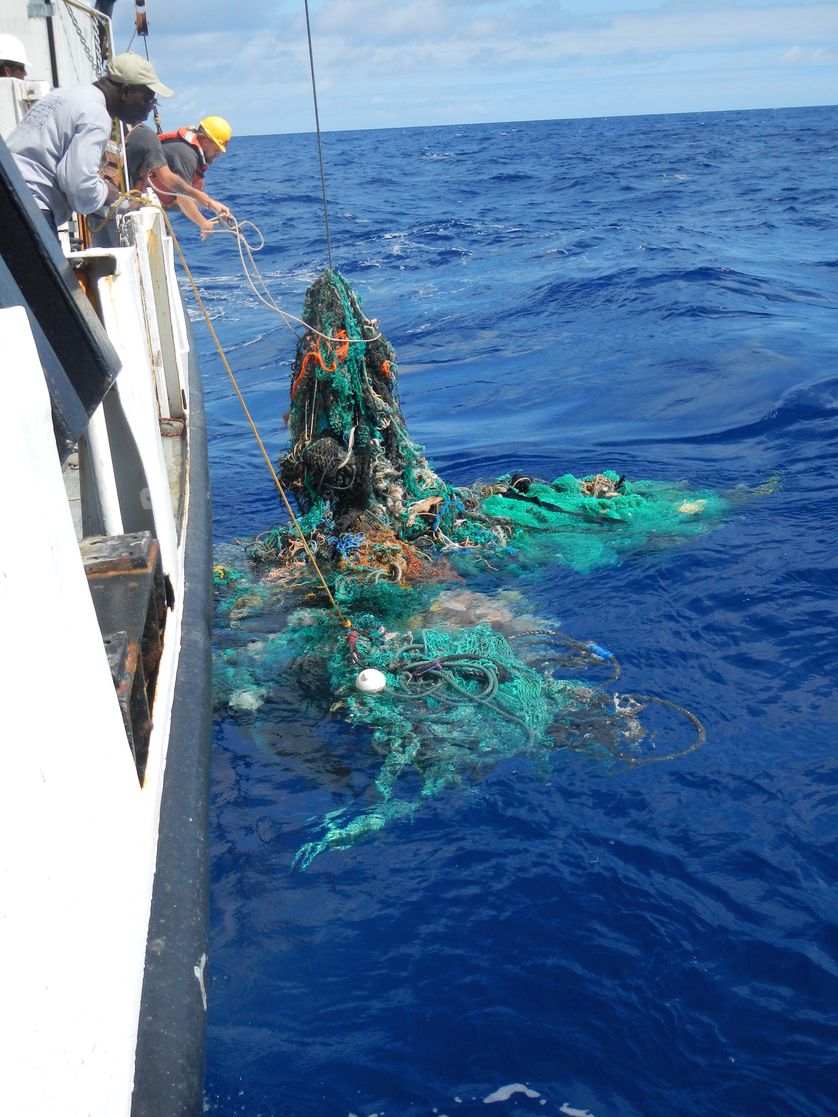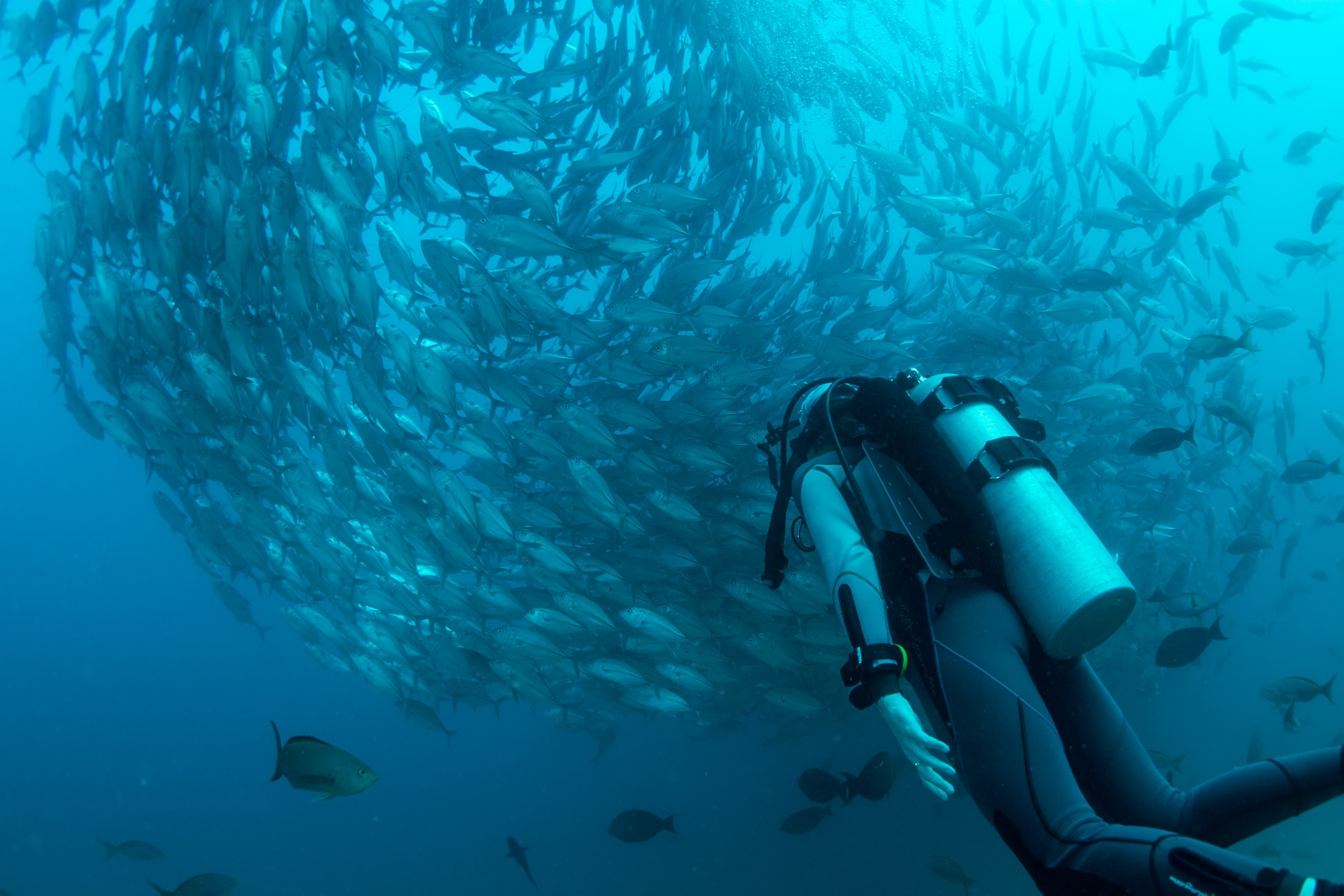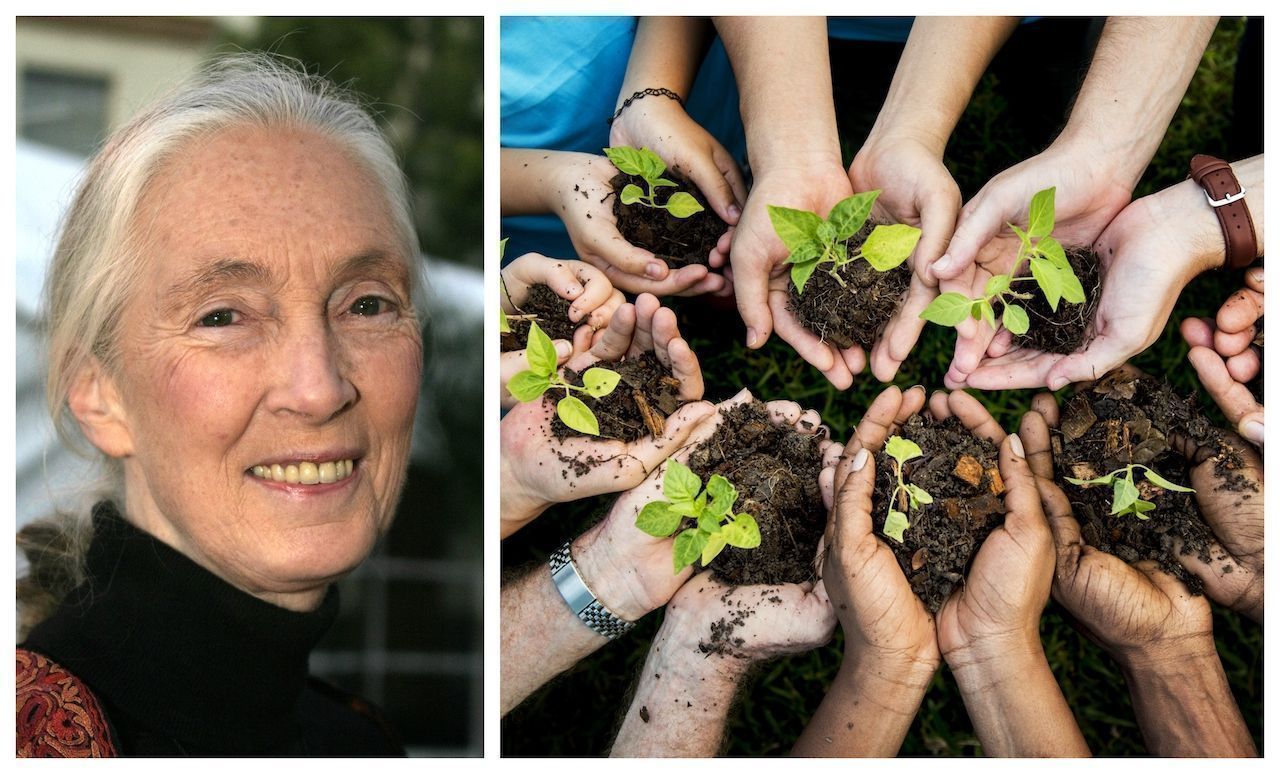Ocean Cleanup
Ocean Racers Help Solve the Great Pacific Garbage Patch Problem
The main problem of Earth's body of waters and the marine life is the toxic wastes and garbage.
Thousands of these marine animals struggle every day to survive. Some of them are now endangered which was caused by water pollution, animal poaching and the root - humans.
It is very alarming and saddening of what is happening to our waters.

The Ocean Cleanup members
Good thing there are people who are eager to make a change, conserve and save whatever way they can.
A group of ocean racers joined and competed in the Transpacific Yacht Race in 2015 - a 2,225-nautical mile course from Los Angeles to Honolulu. The bulk of racing occurs in the North Pacific Gyre, the vortex of four prevailing ocean currents and home to the most extensive collection of trash on the planet — the Great Pacific Garbage Patch.

Ocean garbage
The Great Pacific Garbage Patch (GPGP) is the largest of the five offshore plastic accumulation zones in the world’s oceans. It is located halfway between Hawaii and California - containing some 1.8 trillion pieces of plastic.
In the GPGP, the racers were shocked at the amount of debris they saw floating by plastic drink crates, large rubber and plastic buoys, coils of fishing rope, a bright orange lifesaver.
Even more worrisome was the garbage they couldn’t see, but only heard, in the form of a hard DONG! Racers experienced there were the times they had to stop racing, drop the sails, turn the boat into the wind and back up to remove large chunks of commercial fishing line off the keel.

Great Pacific Garbage Patch
In 2015, the full extent of the GPGP was still unknown — the area, the concentration of microplastics, the spectrum and distribution of larger pieces — which is how The Ocean Cleanup’s founder Boyan Slat ended up at the Transpac award ceremony, where he detailed for the seafaring crowd how Transpac racers would contribute to his Mega Expedition, a large-scale mission to survey pollution in the Pacific.
Volunteer crews on 30 sailboats plus the 171-foot Ocean Starr research vessel set out from Hawaii on parallel courses.
It's fitting that the most significant effort to clean up the Pacific should find its way back to the Transpac. After all, it was a Transpac racer who first brought the existence of the GPGP to the attention of the science and environmental community.

Boyan Slat
The results of the Mega Expedition and subsequent Aerial Expedition data analysis published this spring even surprised researchers: 80,000 metric tons of plastic, the equivalent of 500 jumbo jets, and up to 16 times higher than previous estimates. The "good" news is that 92 percent of the mass of plastic is in the form of larger pieces, which are easier to fish out before they break down into microplastics.
The whole time they were crunching the numbers on how much plastic was in the Pacific Ocean, the team was also developing a solution: a high-density polyethylene floating boom attached to a nylon screen and held in place under the water by large sea anchors. HDPE is extremely durable and recyclable and designed to survive the extreme conditions in the middle of the ocean.
Just over 30 years since Moore’s initial report, The Ocean Cleanup plans to deploy System 001 to the GPGP sometime in late August, depending on the speed of construction. Working out of an assembly base in the San Francisco Bay Area. The next step is the "final rehearsal" with the complete 2,000-foot boom, which they’ll tow 240 nautical miles off the coast of Northern California. Global deployment is slated to begin in 2020.

First North Sea Prototype
The Ocean Cleanup continues efforts to generate awareness, supporting recycling initiatives, and sharing knowledge onshore and offshore. The group has partnered with the American Sailing Association and they’re working with sailors from the Volvo Ocean Race to continue research and raise awareness for the plastic problem.
It’s easy to blame natural disasters like hurricanes and tsunamis or careless shipping companies for the large chunks of plastic in the water. But they reiterated that onshore plastic use is the reason the oceans are as polluted as they are.

Ocean racers
But being aware of the problem and then trying to clean it up isn't enough. It's time we make a real effort to curb the problem at its source. Significantly reduce the amount of single-use plastic we consume, reusing what we can, and making sure that the rest gets into the appropriate recycling container.
“Environmental cleanliness begins with individual desire to be clean.”
- Lailah Gifty Akita







0 Comments